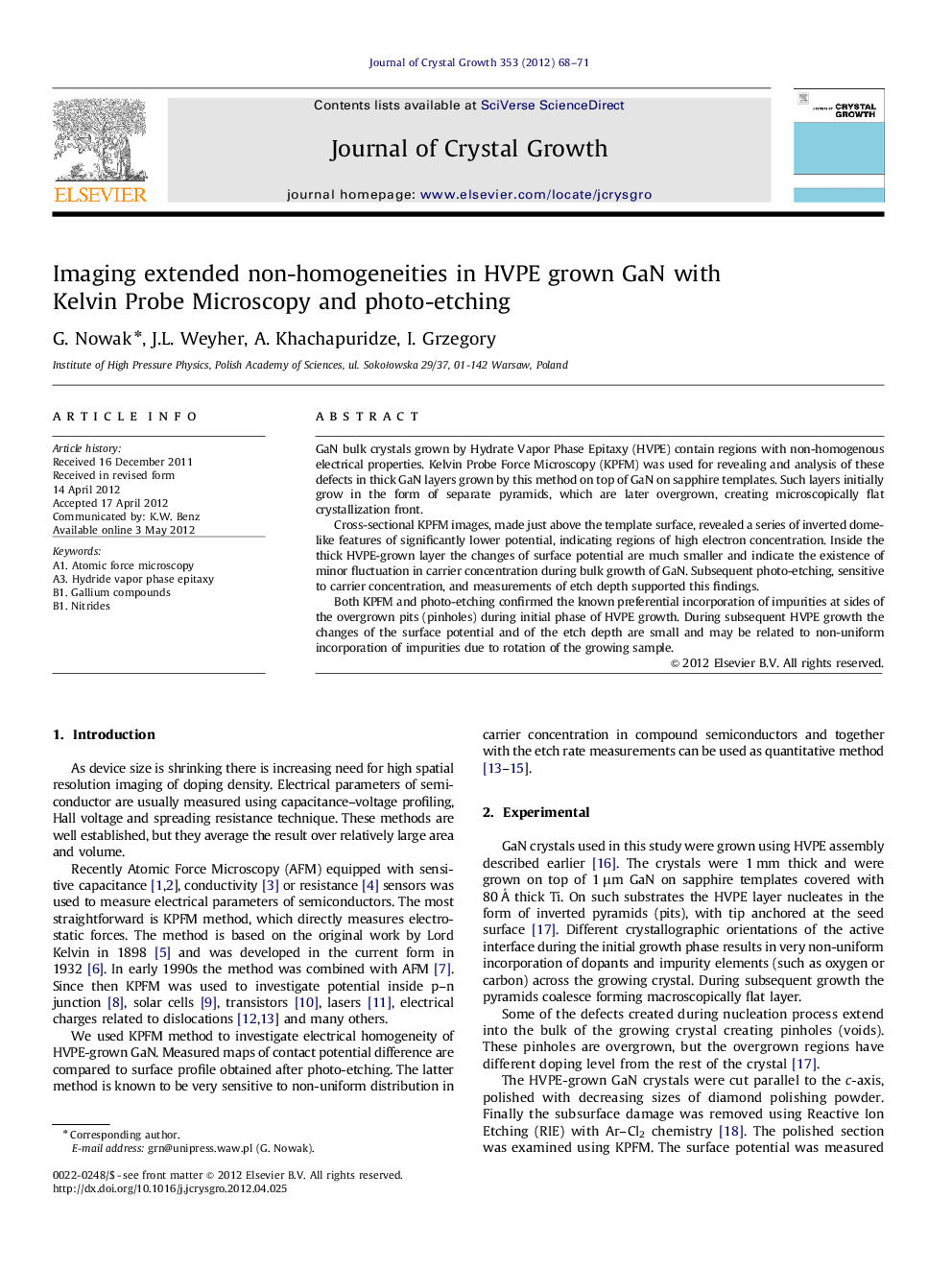| Article ID | Journal | Published Year | Pages | File Type |
|---|---|---|---|---|
| 1791647 | Journal of Crystal Growth | 2012 | 4 Pages |
GaN bulk crystals grown by Hydrate Vapor Phase Epitaxy (HVPE) contain regions with non-homogenous electrical properties. Kelvin Probe Force Microscopy (KPFM) was used for revealing and analysis of these defects in thick GaN layers grown by this method on top of GaN on sapphire templates. Such layers initially grow in the form of separate pyramids, which are later overgrown, creating microscopically flat crystallization front.Cross-sectional KPFM images, made just above the template surface, revealed a series of inverted dome-like features of significantly lower potential, indicating regions of high electron concentration. Inside the thick HVPE-grown layer the changes of surface potential are much smaller and indicate the existence of minor fluctuation in carrier concentration during bulk growth of GaN. Subsequent photo-etching, sensitive to carrier concentration, and measurements of etch depth supported this findings.Both KPFM and photo-etching confirmed the known preferential incorporation of impurities at sides of the overgrown pits (pinholes) during initial phase of HVPE growth. During subsequent HVPE growth the changes of the surface potential and of the etch depth are small and may be related to non-uniform incorporation of impurities due to rotation of the growing sample.
► In HVPE thick GaN crystals Kelvin probe revealed non-uniform doping. ► Photo-etching revealing features similar to those revealed with Kelvin probe. ► Kelvin probe signal and photoetching etch rate are both dependent on carrier concentration. ► Character of the dependence is different for both methods. ► Differences between the two methods are discussed and explained.
